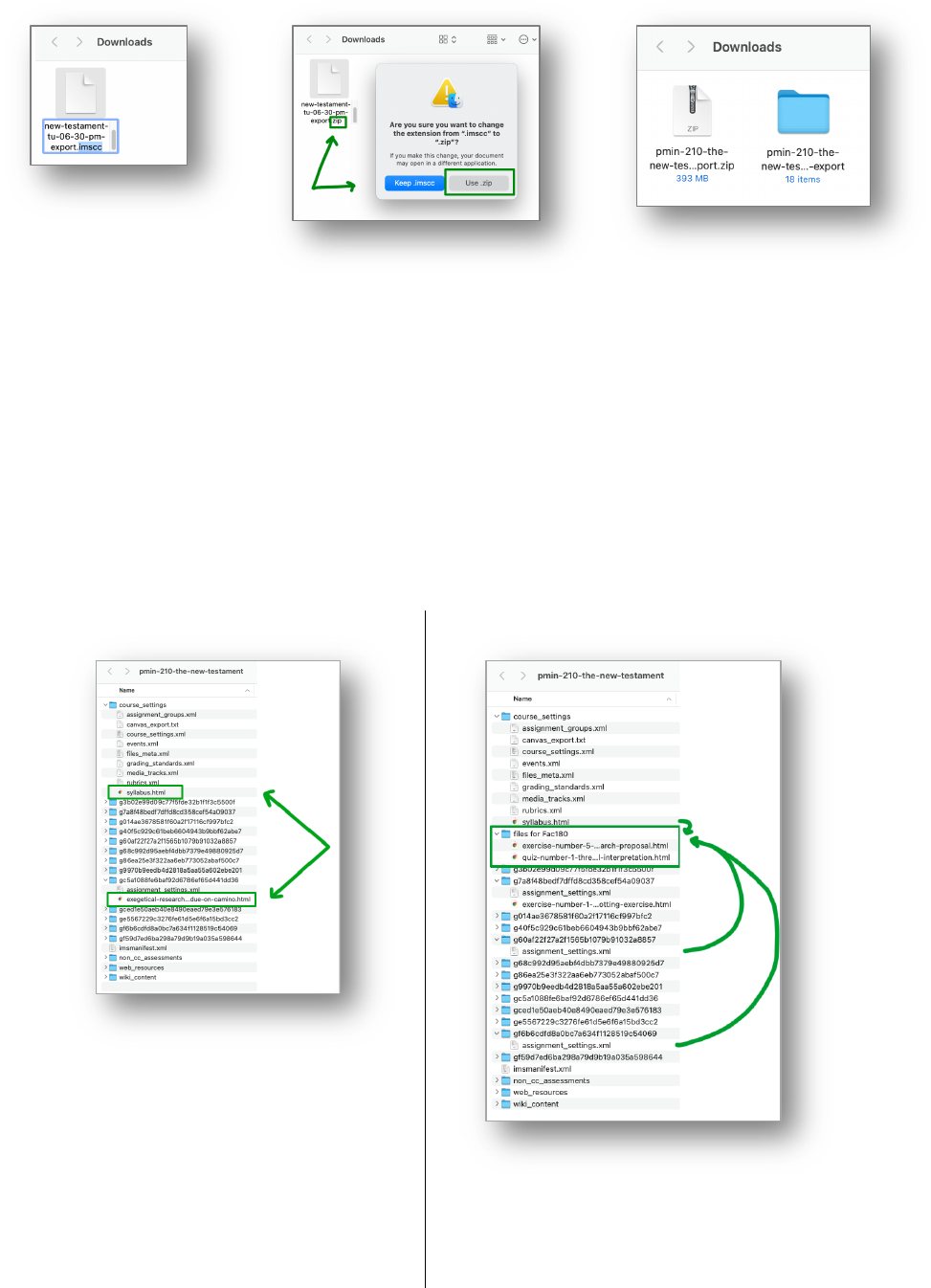
1
Converting Camino pages to pdf
Capturing Your Uploads (click here for how to capture student content)
There are two methods to convert files from Camino. The first can be used by anyone; the
second requires a subscription to Adobe Acrobat Pro. Both methods use steps 1 and 2, differing
only at steps 3-4.
1. Export your course
a. In your Camino class, go to
Settings
b. Select Export Course
Content
c. At “Export Type,” choose
Course and click the Create
Export button
d. It can take some time for the
course to export. When it’s
done, you’ll receive an email
prompt and find a link to the
export file here

2
2. Download the file to your computer.
a. Click that export link,
then navigate to your
downloads folder.
b. Highlight the extension imscc
and type zip in its place (this
can be done without damaging
the file; it simply changes the
extension to one that your
computer will be able to open).
c. Double click on the zip file to
produce a folder with html files
of your course materials.
3. Select the files you want to convert to pdf. Be selective; choose only those syllabi,
assignments, and other elements that best represent your teaching expertise and
pedagogical development. At this point, what you will be able to do depends on whether you
have the paid subscription to Adobe Acrobat Pro, which allows batch conversions of multiple
html files to pdf (right column), or not (left column).
Adobe Acrobat
Adobe Acrobat Pro
Decide which files to convert. You will
convert them individually.
Create a folder within your course export for
the materials you want to upload to
Faculty180, and drag into it those files you
would like to include in your evaluation
portfolio.

3
4. Convert the files you want to include in your evaluation portfolio to pdf.
Adobe Acrobat
Adobe Acrobat Pro
Right click on the page and select Print.
Open the Tools menu. Select the Create & Edit tool, and
click Open. In the next window, select Multiple Files and
click the option to Create Multiple PDF Files. In the next
window, select Add Files and, from the pop-up menu, Add
Folders. Navigate to the Faculty180 folder you created in
step 3, and click it. The files from the folder should now
appear in the window. Click the OK button. In the next
window, choose your target folder and other options.
In the “Destination” window, choose
Save as PDF, and click the Save
button. Create a folder hierarchy on
your computer to store the pdfs for later
upload to Faculty180.
Your pdf files are now available to upload to Faculty180.

4
Capturing Student Content
Student content is not automatically downloaded in a Camino course export.
If you would like to include a representative sample of student performance to illustrate an
assignment or the quality of student work, there are three steps:
1. Open the page, discussion
board, or other student
content file in Camino.
2. Right click on the page to
pull up the menu, and selec
t
Print.
Note: In addition to this method,
web browsers have their own
unique methods to enable
printing to pdf from a webpage;
see this DigitalTrends guide:
www.digitaltrends.com/
computing/how-to-save-a-
webpage-as-a-pdf.
3. Select for the destina-
tion Save to PDF, cli
ck
the Save button, and
choose the location on
your computer where
you are staging these
files for eventual upload
to your evaluati
on
portfolio.
